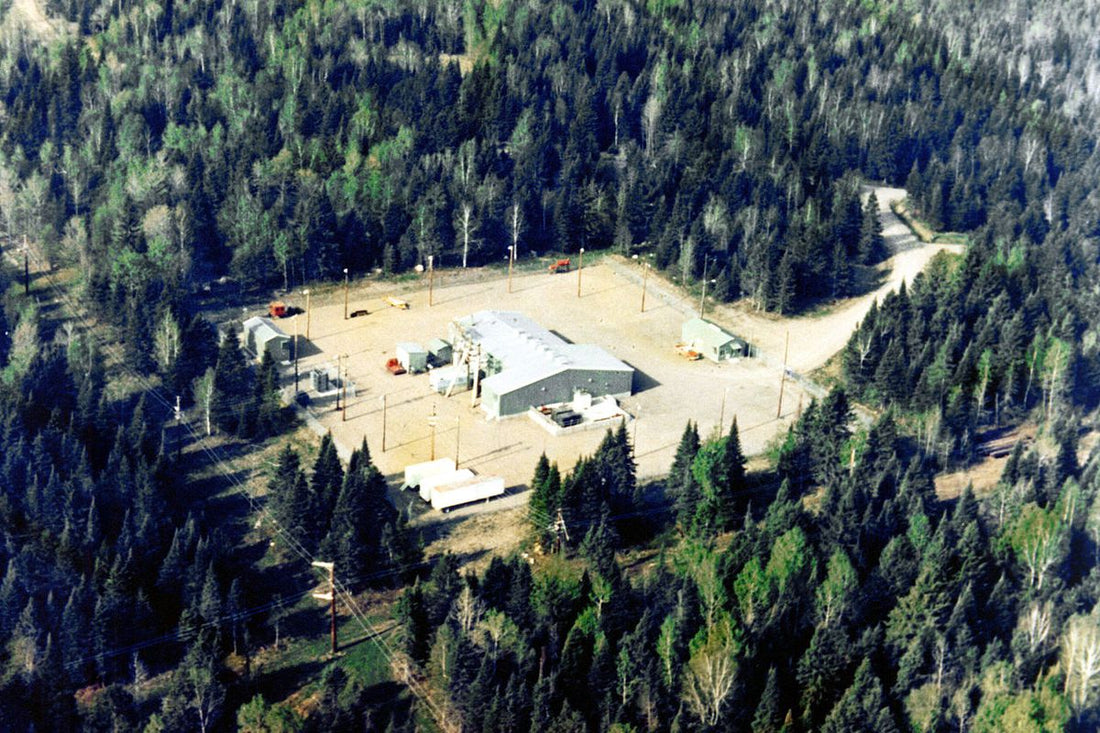
Yes, the US Navy wanted 9,500km long underground antenna system powered by 100 underground power plants.
Share
" Hi A.R.S.E. I know it's not your forte but do you have any insider knowledge on Project Sanguine and if it was at all possible? It seems ridiculous" - Arthur via out Space Society.
Okay, firstly thanks Adam and strap in for a long one...
In the late 1960s, amidst the Cold War tensions and the ever-looming threat of a nuclear conflict, the United States Navy embarked on a highly ambitious project known as "Project Sanguine." This initiative aimed to create an extensive underground antenna system, stretching over a colossal 6,000 miles, which would have covered approximately 40% of the state of Wisconsin. While its primary purpose was to communicate with submarines lurking beneath the ocean's surface, Project Sanguine represented an audacious feat of engineering and logistics.
During the Cold War, submarines played a vital role in the U.S. Navy's strategy. These stealthy vessels carried ballistic missiles and patrolled beneath the ocean, providing a formidable deterrent against potential adversaries. However, staying connected with submerged submarines posed an immense challenge. Radio waves, which typically transmit signals through the air, struggle to penetrate the ocean's depths.
To overcome this challenge, the Navy sought a revolutionary solution that would allow for reliable communication with its submerged assets. Project Sanguine was the result of these efforts.

Map showing location of the US Navy ELF transmitters. The red lines show the paths of the ground dipole antennas. The Clam Lake facility (left) had two crossed 22km. ground dipoles. The Republic facility had two 22km. dipoles oriented east–west, and one 45km. dipole oriented north–south.
Project Sanguine was nothing short of extraordinary in its scope and ambition. At its heart lay an underground antenna system, designed to transmit Extremely Low Frequency (ELF) radio waves. ELF waves have the unique property of penetrating seawater to reach submarines operating at great depths. To harness this capability, the project proposed the construction of an extensive network of underground power plants and antenna cables.
Here are some key technical aspects of Project Sanguine:
Massive Underground Antenna: The centrepiece of the project was a gigantic underground antenna, covering 6,000 miles. This astounding length, equivalent to approximately 9,656 kilometres, was intended to run through the state of Wisconsin.
Underground Power Plants: To generate the necessary power for transmitting ELF waves, Project Sanguine called for the construction of a hundred underground power plants. These facilities would produce the colossal amounts of electricity required for the system to function effectively.

Clam Lake ground dipole antenna, showing how it works. The alternating current I in the line is shown flowing in only one direction for clarity.
Surviving Nuclear Attacks: In an era when the threat of nuclear conflict was ever-present, Project Sanguine was designed to withstand a nuclear attack. The system's underground infrastructure would have provided significant protection against the destructive force of atomic bombs.
Project Sanguine was a ground breaking concept, but its implementation was marred by numerous challenges. Environmental concerns, logistical difficulties, and public opposition all played a role in its eventual downfall. The extensive network of power plants and cables would have significantly impacted the natural landscapes of Wisconsin, which led to strong opposition from environmentalists and local communities.
Additionally, advances in technology, such as the development of more efficient satellite communication systems, diminished the urgency of Project Sanguine. These newer technologies offered a more practical and less invasive means of maintaining communication with submarines.
As a result, Project Sanguine was officially cancelled in the early 1970s. Its ambitious vision, while never fully realized, stands as a testament to the lengths the U.S. military was willing to go to ensure the safety and effectiveness of its submarine forces during a perilous period in history.
In retrospect, Project Sanguine remains a remarkable chapter in the annals of engineering and military history, showcasing the relentless pursuit of innovation in the face of unprecedented challenges. While it may have been consigned to the archives, its legacy endures as a testament to human ingenuity and the determination to overcome the most formidable obstacles, even beneath the earth's surface.
You’ve come this far…
Why not venture a little further into A.S.S. - our exclusive Australian Space Society.
And keep thrusting Australia into the deep unknown…
#Space_Aus




